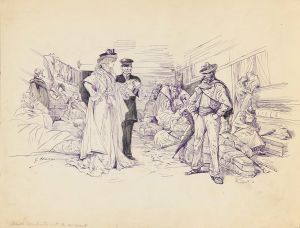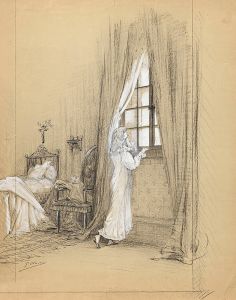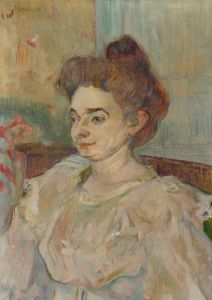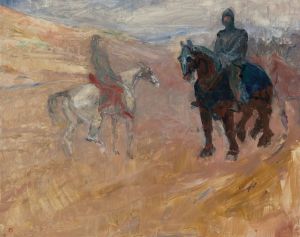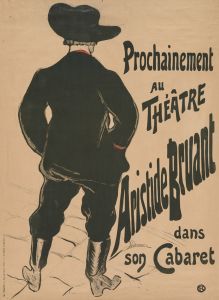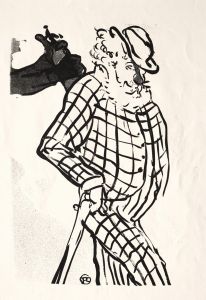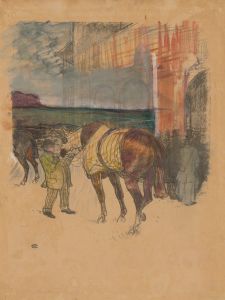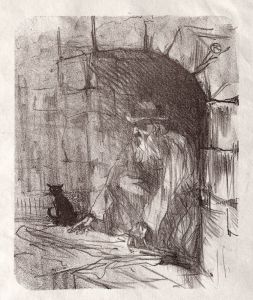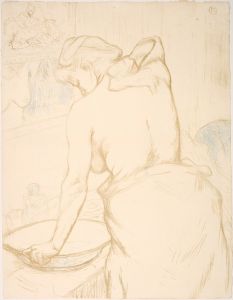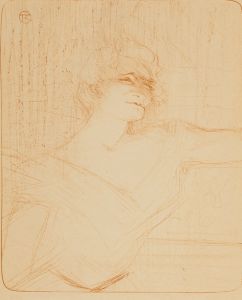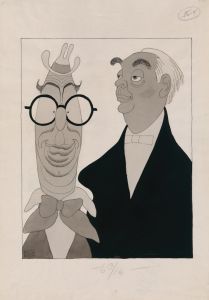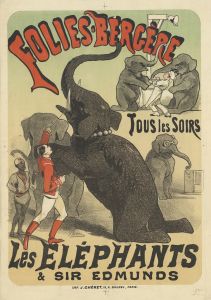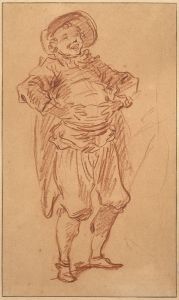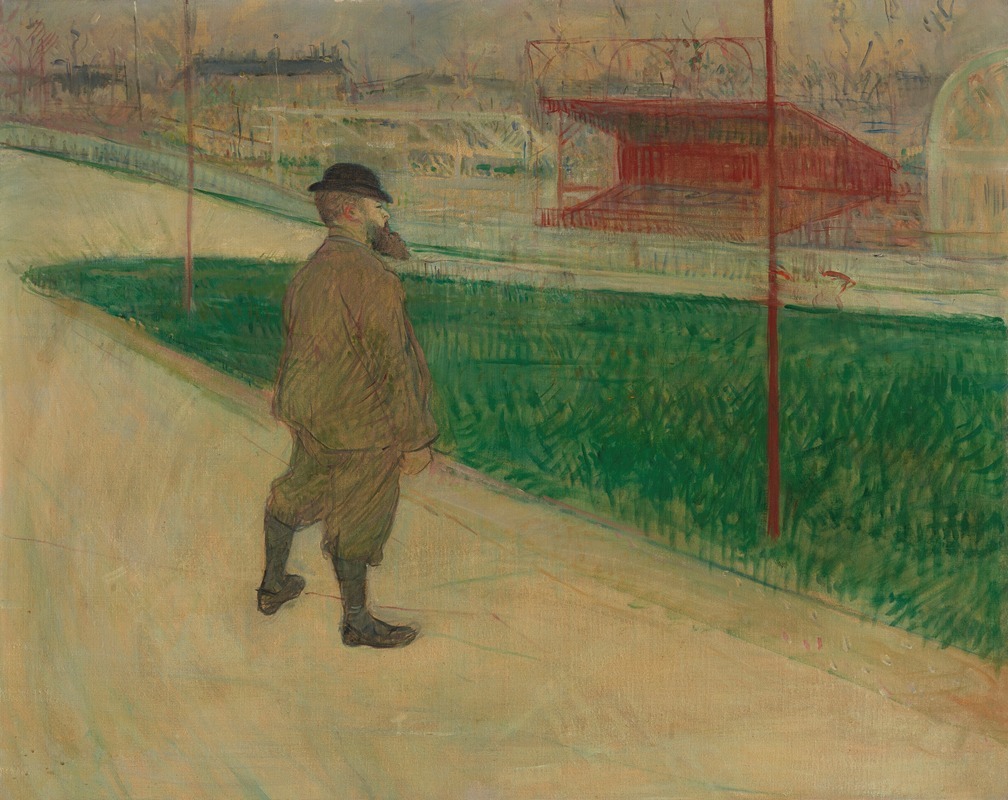
Tristan Bernard au Vélodrome Buffalo
A hand-painted replica of Henri de Toulouse-Lautrec’s masterpiece Tristan Bernard au Vélodrome Buffalo, meticulously crafted by professional artists to capture the true essence of the original. Each piece is created with museum-quality canvas and rare mineral pigments, carefully painted by experienced artists with delicate brushstrokes and rich, layered colors to perfectly recreate the texture of the original artwork. Unlike machine-printed reproductions, this hand-painted version brings the painting to life, infused with the artist’s emotions and skill in every stroke. Whether for personal collection or home decoration, it instantly elevates the artistic atmosphere of any space.
Henri de Toulouse-Lautrec, a prominent French painter and illustrator, is well-known for his vivid portrayals of Parisian nightlife in the late 19th century. Among his diverse body of work, "Tristan Bernard au Vélodrome Buffalo" stands out as a unique piece that captures the essence of a specific cultural and sporting event of the time. This artwork is a testament to Toulouse-Lautrec's keen interest in contemporary society and his ability to encapsulate the spirit of his era through his art.
The painting "Tristan Bernard au Vélodrome Buffalo" depicts Tristan Bernard, a notable French playwright, novelist, and humorist, at the Vélodrome Buffalo, a famous cycling track located in the Paris suburb of Neuilly-sur-Seine. The Vélodrome Buffalo was a popular venue for cycling races and other sporting events during the late 19th and early 20th centuries. It was named after the American showman Buffalo Bill, whose Wild West shows had captivated Parisian audiences.
Tristan Bernard, born Paul Bernard in 1866, was a multifaceted figure in French cultural life. He was known for his wit and humor, which were evident in his plays and writings. Bernard had a strong connection to the world of sports, particularly cycling, and he even managed the Vélodrome Buffalo for a period. His involvement in the cycling world and his friendship with Toulouse-Lautrec likely inspired the creation of this artwork.
Toulouse-Lautrec's painting captures the lively atmosphere of the Vélodrome Buffalo, with its dynamic composition and expressive use of color. The artist's characteristic style, marked by bold lines and a keen sense of movement, is evident in this work. Toulouse-Lautrec was known for his ability to convey the energy and excitement of the scenes he depicted, and "Tristan Bernard au Vélodrome Buffalo" is no exception. The painting reflects the vibrant social scene of the time, where sports, entertainment, and culture intersected.
The artwork is also significant for its portrayal of Tristan Bernard, who was an influential figure in the Parisian literary and theatrical circles. Bernard's presence in the painting highlights the close relationship between the arts and sports during this period. Toulouse-Lautrec's depiction of Bernard at the Vélodrome Buffalo serves as a reminder of the interconnectedness of different cultural spheres in fin-de-siècle Paris.
Henri de Toulouse-Lautrec's contribution to art extends beyond his technical skills; his works offer a window into the social and cultural dynamics of his time. "Tristan Bernard au Vélodrome Buffalo" is a prime example of how Toulouse-Lautrec captured the essence of his subjects, providing insight into the personalities and events that shaped the cultural landscape of late 19th-century France.
While specific details about the painting's current location or its provenance may not be readily available, its significance lies in its representation of a vibrant period in French history. Toulouse-Lautrec's ability to immortalize moments of everyday life and notable figures like Tristan Bernard ensures that his work continues to be celebrated and studied for its artistic and historical value.





